Home Assistant is an increasingly popular home automation software. It has some great features for efficiently managing your entire home. However, it must be said that for the interface to look practical, you still need to get your hands dirty. The latest update brings a new feature that could make life much easier: drag-and-drop dashboards! But other new features are also included: the use of script/field entries from the dashboard, a new energy graph for individual devices, faster startup, and more. Let's take a look at the latest update.
A new view: sections
The dashboard currently offers three display types: Panel, Sidebar, and Masonry. Since last year, Home Assistant developers have been hard at work researching and developing ways to make dashboards easier to customize and use, as it's fair to say, it wasn't the most intuitive system out there. Home Assistant now offers a new layout type called “Sections.”
Dashboards are packed with information. Users often place dozens of cards for all sorts of buttons, switches, charts, indicators, and more.
By grouping cards into “sections,” you can reduce the number of items you have to navigate when looking for a specific card, as you can first search for the title of the relevant group and then narrow down the scope of the information search within that particular group.
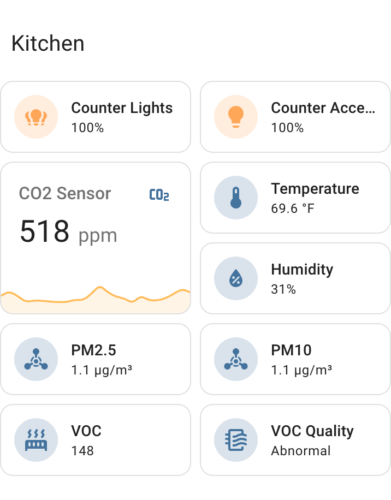
By grouping the cards in a section into a grid with a fixed number of columns, the relative position of cards within a section is unaffected by screen size changes, and the cards' spatial memory is therefore preserved, allowing for faster and less tedious use.
The cards in the new “Sections” view type are all aligned in an orderly grid to ensure their consistent and predictable position as screen size changes. Three cards have been reworked to fit the grid: Tiles, Sensors, and Buttons. These cards will occupy the correct space in the grid, while the other cards will occupy the full width of a section by default for the time being.
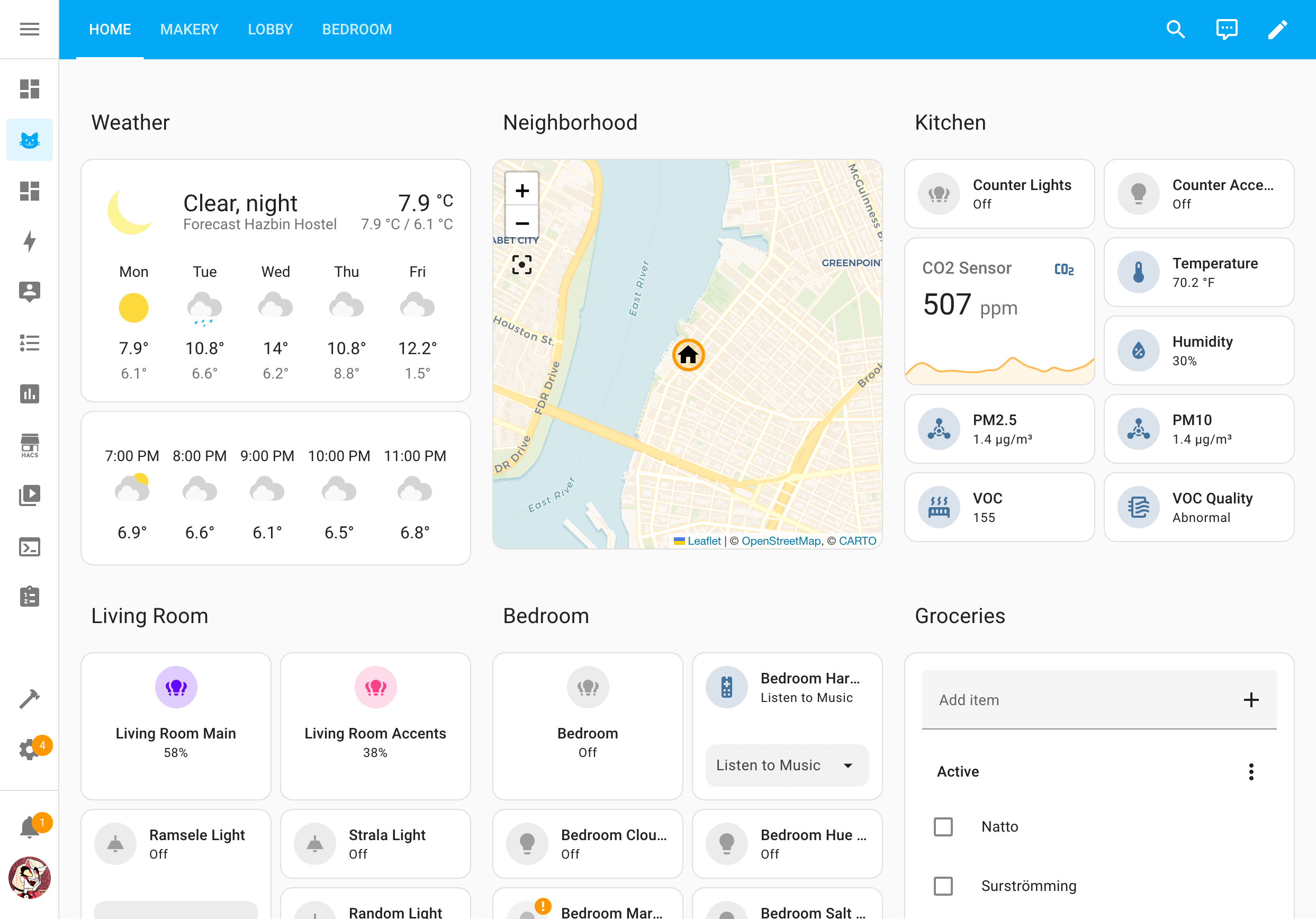
To start using the new Sections view type, simply create a new view on your dashboard and select Sections (Experimental) as the view type. It's not yet possible to migrate your current dashboard (but they're working on it). You can then compose your dashboard as you wish:
Reorder cards and sections by dragging and dropping!
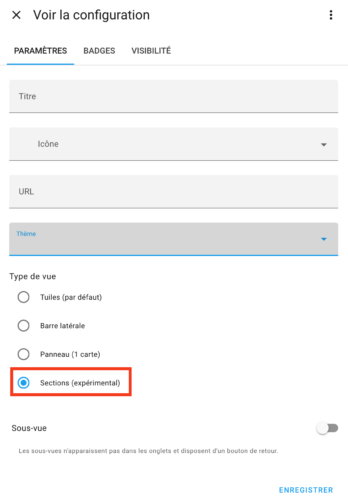
With the new “sections” view type, you can arrange cards and sections by simply dragging and dropping, creating a dashboard that's easy to navigate and remember.
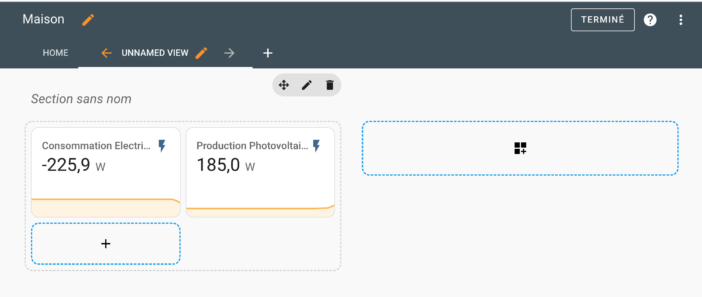
To do this, when your dashboard is in edit mode:
To reorder sections, long-tap the edit icon's drag handle, then move your cursor or to the desired location. The other sections will move away from where the selected section falls.
To reorder cards, tap and hold anywhere on the map, then move your cursor to the desired location. Easy!
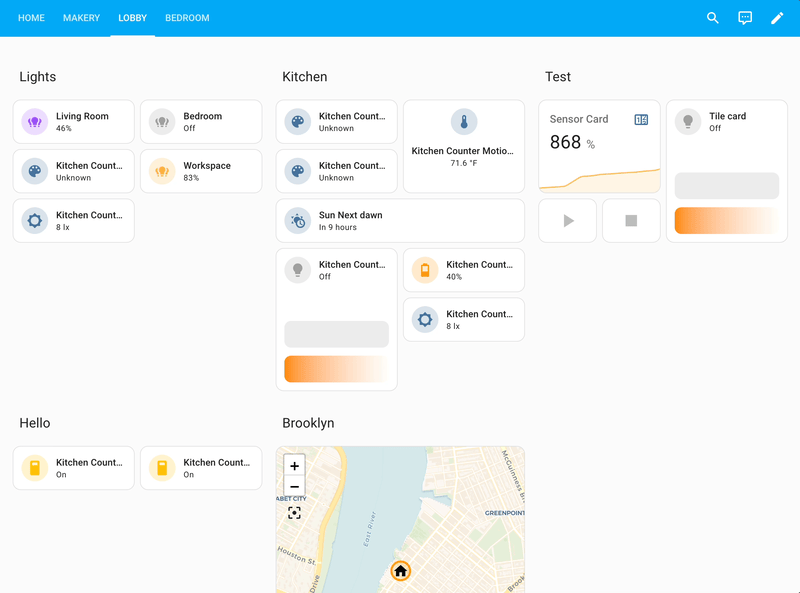
Running a script from the dashboard with user input
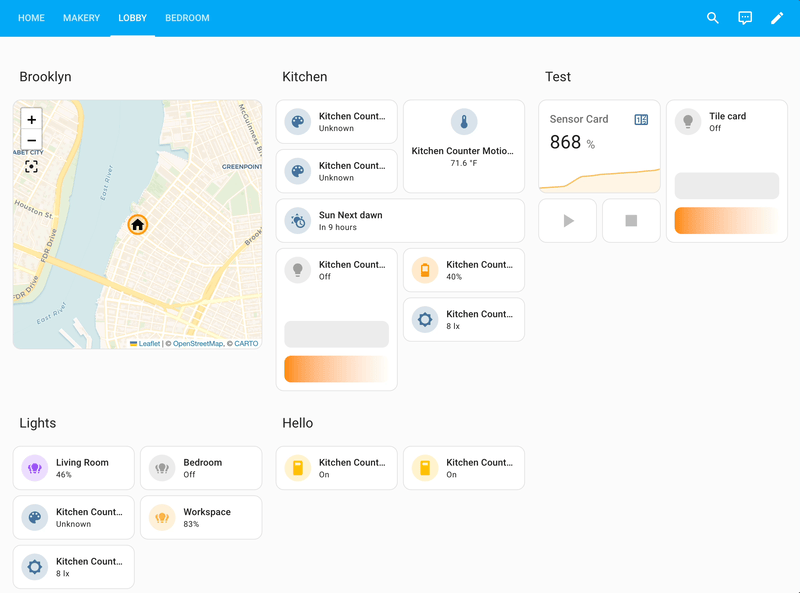
Scripts in Home Assistant allow you to capture a sequence of actions and choices in a reusable way. Scripts are even more powerful because they can include input fields, allowing you to send data at script execution time.
Script fields can be defined in the script editor and appear when you call the script in your automation. In this release, script fields will be available in the “More Info” dialog when you tap a script in a dashboard.
This allows you to provide the input fields and run the script, opening up a new dimension of possibilities:
To accompany this new feature, the developers have created two templates to help you get started with scripts on your dashboard:
Add to To-Do List: This plan allows you to create a script to add an item to a to-do list, preconfigured for a specific to-do list. When enabled, it prompts the user to indicate the item to add.
- New Energy Graph for Individual Devices
- One feature I really like about Home Assistant is its energy dashboard, which I've already shown you in various topics related to solar energy, among other topics.
One of the missing building blocks was the ability to view the energy consumption of individual devices over time. A new graph now makes it easy to see which devices are responsible for which portion of your energy consumption over time.
For example, in the image above, it's easy to see that the dishwasher is responsible for the morning peak and the oven for the evening peak.
New phrases for Assist

Assist, Home Assistant's voice assistant, has learned new things.
Valve support has been added. You can now ask Assist to adjust the position of a valve, or simply open or close it completely.
It's now possible to more precisely control the position of your appliances.
Set the curtain position to 80%.
Developers are working on expanding this feature to define the position of multiple appliances or entire zones, similar to what's possible with the open and close phrases.
Until now, it wasn't possible to start or stop a vacuum cleaner by voice. Assist now knows how to start a vacuum cleaner and return it to its base. Here are some sample phrases, in case you have a vacuum cleaner named Dusty:
Start Dusty
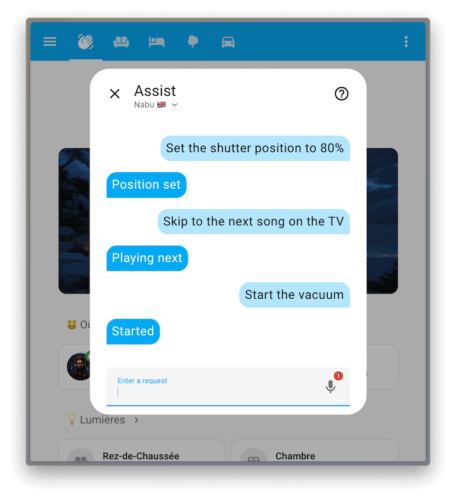
Bring Dusty back to base
The biggest changes concern media players. The assistant can now pause and resume playback, skip to the next media, and adjust the volume of media players!
Note that currently, these phrases are limited to targeting a single device by name, for example:
Skip to the next song on the TV
Here too, the developers are working on extending the logic of these new intents to allow targeting areas and affecting only the desired media player(s).
Many other improvements and fixes
Many other improvements and fixes are also included. Far too many to list them all here (you can find all the changes here).






Please remain courteous: a hello and a thank you cost nothing! We're here to exchange ideas in a constructive way. Trolls will be deleted.